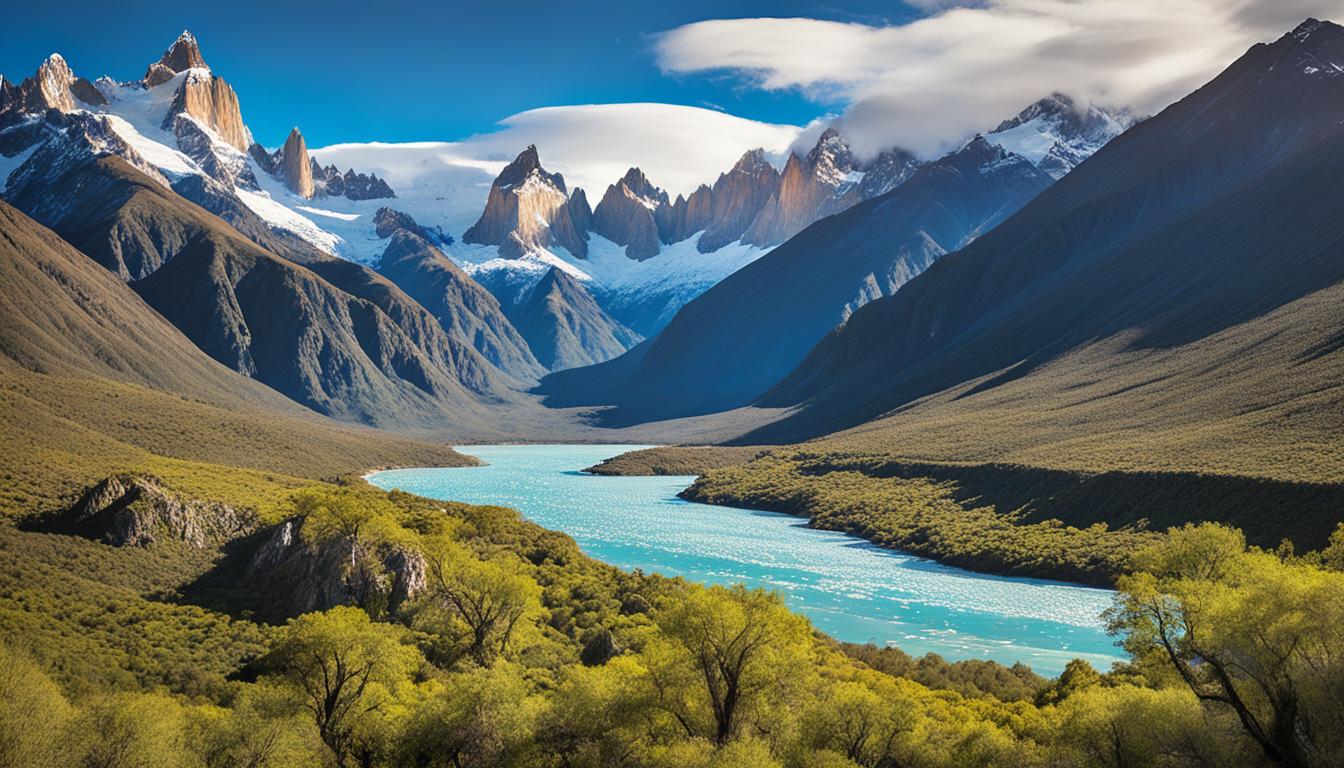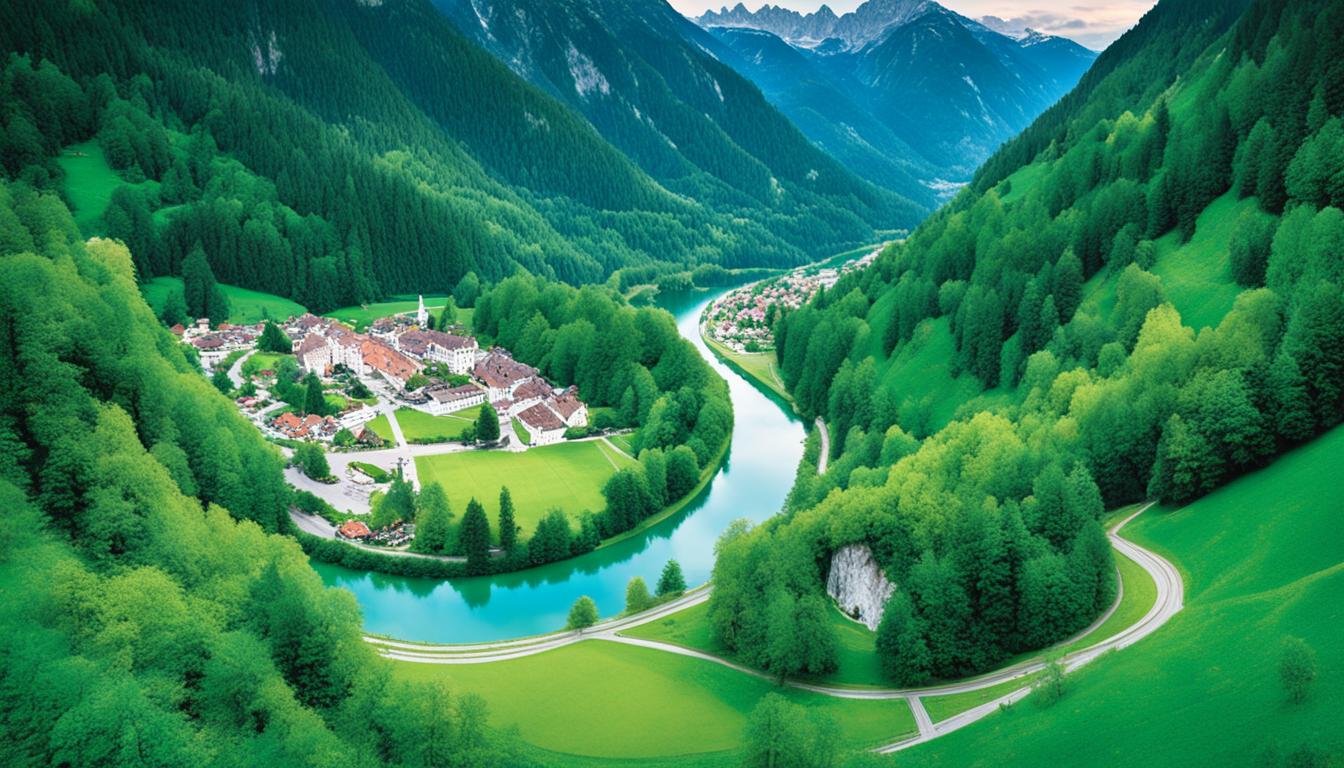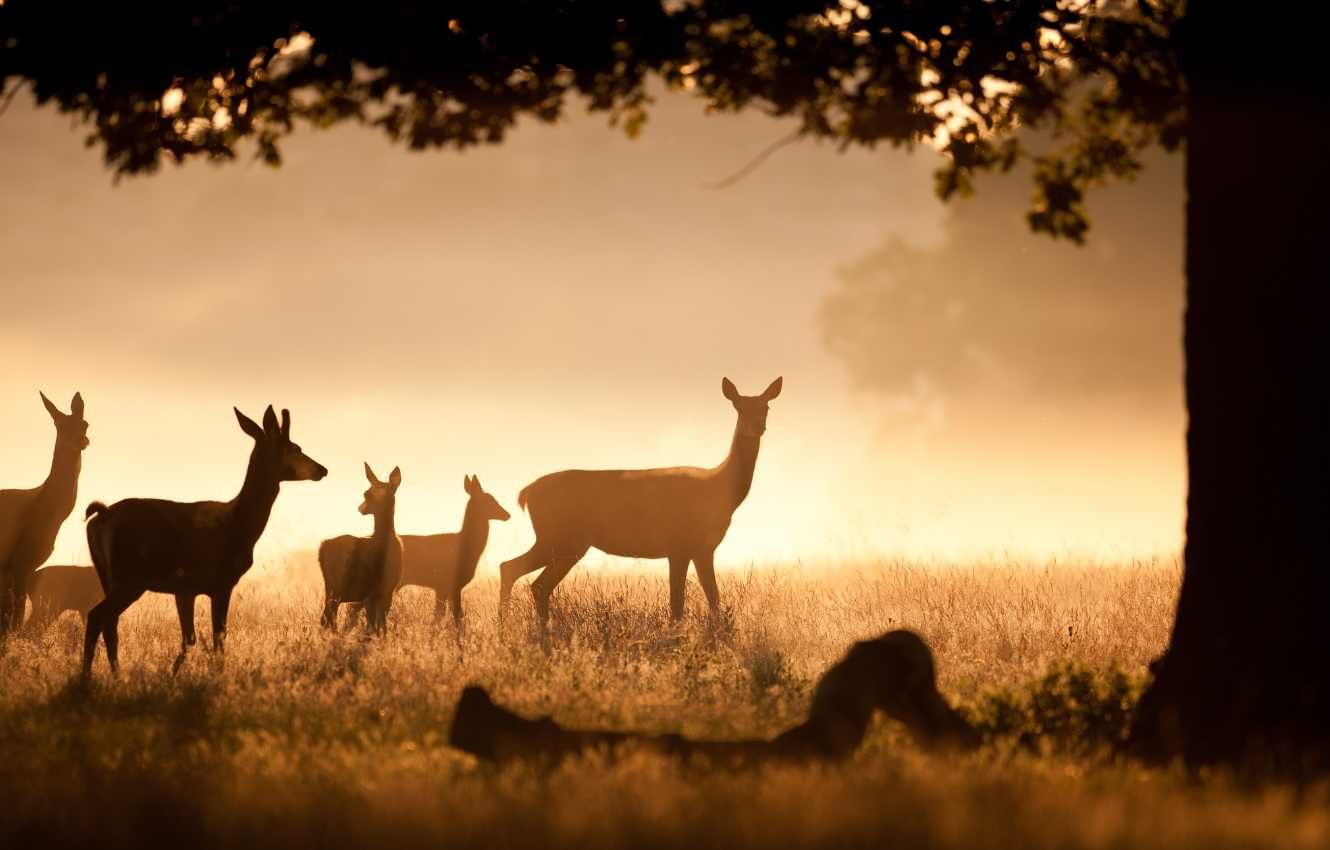Australia Sacred Natural Sites and Biodiversity
Did you know that governments around the world have pledged to protect 30% of the planet’s land and oceans by 2030? However, there is one crucial aspect of conservation that often goes overlooked – Australia’s sacred natural sites. These sites, rich in biodiversity and steeped in Indigenous heritage, hold the key to preserving endangered species and rare ecosystems. Yet, despite their significance, many of these sacred places remain unacknowledged and unprotected.
Key Takeaways:
- Australia’s sacred natural sites are vital for the conservation of biodiversity and are often the last refuge for endangered species and rare ecosystems.
- These sacred places have been protected for centuries by religious beliefs and strict taboos, proving the power of culture and spirituality in preserving the environment.
- However, sacred natural sites face numerous challenges, including a lack of recognition and protection, the loss of traditional ecological knowledge, and the threat of industrial activities.
- Integrating sacred sites into national and international protected area networks is crucial for their long-term conservation, emphasizing the need for specialized management approaches.
- Conservation partnerships involving government, industry, Indigenous groups, and local communities are essential in ensuring the sustainable management of these sites for future generations.
The Significance of Sacred Natural Places
Sacred natural places are found in almost all societies and play a crucial role in community-based conservation. These sites are often the only refuges for endangered species and rare ecosystems. They have been preserved for centuries by religious fervor and strict taboos that are more effective than traditional conservation methods. The creation and longevity of these sites highlight the power of religion in protecting biodiversity.
Throughout history, Indigenous communities in Australia have recognized and respected the sacredness of their natural environments. These Indigenous sacred places in Australia are not only spiritually significant but also form important Aboriginal cultural landscapes. They represent the deep connection between Indigenous people and their land, encompassing traditional knowledge and practices that have sustained ecosystems for generations.
The conservation of sacred natural sites in Australia is not only about protecting the physical landscapes but also preserving the traditional ecological knowledge in Australia held by Indigenous communities. This knowledge is passed down through generations and holds valuable insights into the functioning of ecosystems and wildlife behavior. It is an essential component in the successful management of biodiversity in Australian ecosystems.
Sacred natural places are a testament to the harmony between human societies and the natural world. They demonstrate the profound influence that cultural practices and beliefs can have on environmental conservation. By recognizing and respecting the sacredness of these places, we can achieve a more sustainable and holistic approach to biodiversity conservation.
To illustrate the importance of sacred natural places in Australia, let’s take a closer look at Uluru-Kata Tjuta National Park. This iconic park is not only a UNESCO World Heritage site but also a significant Indigenous sacred site. It serves as a living testament to the spiritual and cultural connections between the Anangu people and their land. The park is home to a diverse range of wildlife, including endangered species like the Mala (Rufous hare-wallaby) and the Bilby. The coexistence of religious significance and ecological abundance at Uluru-Kata Tjuta National Park highlights the intrinsic link between Indigenous sacred places and the conservation of wildlife diversity in Australian ecosystems.
Australia Sacred Natural Sites and Biodiversity go hand in hand, as the preservation of these sacred places plays a vital role in safeguarding the unique ecosystems and habitats found across the continent. By understanding and appreciating the significance of sacred natural places, we can work towards a more inclusive and comprehensive approach to environmental conservation that respects the cultural heritage of Indigenous communities.
The Conservation Challenges
Sacred natural sites in Australia face several challenges that hinder their recognition and protection from conservationists and the scientific community. These sites, which are essential for the conservation of biodiversity and the protection of natural environments, often do not have the same level of integration into national or international protected area networks as other Australian natural heritage sites.
The standardized management approaches typically used for protected areas may not be suitable for sacred sites, as they often exist amidst farms and human settlements. The unique cultural and spiritual significance of these sites requires specialized management strategies that consider their ecological and social contexts.
Loss of traditional ecological knowledge is a significant threat to sacred natural sites. As younger generations move away from traditional practices and the impact of industrial activities continues to grow, the traditional knowledge and rituals that sustain these sites can be lost, posing further risks to wildlife diversity in Australian ecosystems.
Protecting sacred sites is not just about preserving land; it is about safeguarding an interconnected web of life that has sustained biodiversity for generations. We must recognize the importance of these sites and work towards their conservation alongside Indigenous communities.” – Dr. Emma Johnston, Marine Scientist
To illustrate the challenges faced by sacred natural sites, let’s take a closer look at the example of the Dampier Archipelago in northwestern Australia.
Bearing the Brunt: The Dampier Archipelago
The Dampier Archipelago, located in Western Australia, is a collection of over 40 islands that hold significant cultural and ecological value for the Indigenous communities in the region. This area is home to ancient rock art, sacred sites, and diverse wildlife.
However, the archipelago also hosts major industrial developments, including iron ore mining and port facilities. These activities not only disrupt the pristine natural environment but also pose a risk to the cultural heritage and traditional ecological knowledge associated with the area.
Conservationists and Indigenous communities are working together to find a balance between economic development and the protection of sacred natural sites. Collaborative efforts are underway to integrate traditional ecological knowledge with conservation practices, raising awareness about the importance of biodiversity conservation and the preservation of cultural landscapes.
The challenges faced by the Dampier Archipelago serve as a microcosm of the larger conservation issues surrounding sacred natural sites in Australia. These challenges highlight the importance of recognizing and addressing the complex intersections of culture, ecology, and development in order to ensure the long-term protection of Australia’s natural heritage sites, conservation of biodiversity, and the sustainable management of sacred sites.
| Challenges Faced by Sacred Natural Sites | Description |
|---|---|
| Lack of recognition and protection | Conservationists and the scientific community often overlook the significance of sacred sites, leading to limited support and resources for their conservation. |
| Inadequate integration into protected area networks | Many sacred sites are not effectively integrated into national or international protected area networks, resulting in limited legal protection and management. |
| Unsuitable management approaches | The standardized management approaches used for protecting areas may not align with the unique ecological and spiritual characteristics of sacred sites. |
| Loss of traditional ecological knowledge | Shifting cultural practices and the impact of industrial activities contribute to the loss of traditional knowledge, putting the long-term conservation of sacred sites at risk. |
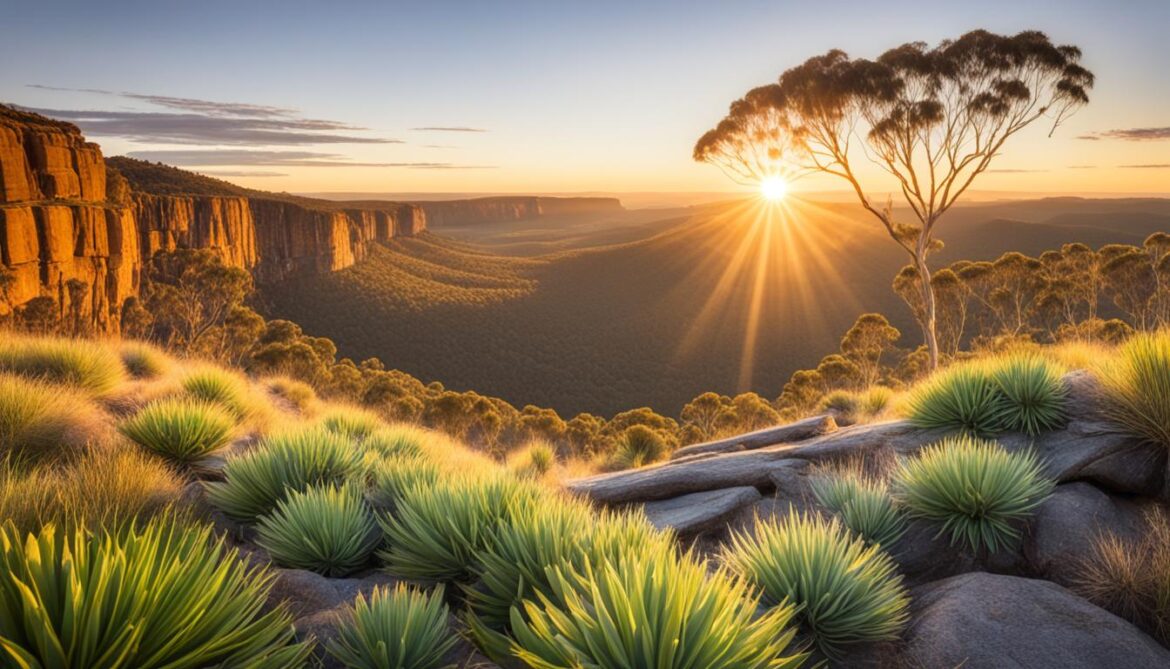
Sacred Natural Sites in Different Cultures
Sacred natural sites are not limited to a specific culture or region. They can be found in different parts of the world, each with its own unique significance and value. These sites hold deep cultural and spiritual meaning and are integral to the identity and heritage of the communities that cherish them. Here are some examples:
Catholic communities in Italy
Italy, with its rich cultural history, is home to numerous sacred natural sites cherished by Catholic communities. These sites often include beautiful landscapes, such as mountains, lakes, and forests, which hold religious significance and serve as places of pilgrimage and spiritual retreat.
Native tribes in the Americas
In the Americas, native tribes have long revered natural sites as sacred places where they connect with their ancestors, spirits, and the natural world. Examples include sacred mountains, rivers, and caves that are integral to their cultural traditions and rituals.
Indigenous groups in Australia
Australia is known for its diverse indigenous cultures, and the Aboriginal people have a deep connection to their land and natural surroundings. They recognize and protect sacred natural places across the country, such as ancient rock formations, waterholes, and coastal areas. These sites hold profound spiritual, cultural, and ecological importance, forming what is known as Aboriginal cultural landscapes.
“Sacred natural sites are an integral part of our cultural heritage. They represent the wisdom, spirituality, and connection that our ancestors have passed down through generations.” – Aboriginal elder
These examples demonstrate the universal human need to connect with nature and the spiritual significance attributed to natural landscapes. Sacred natural sites not only preserve biodiversity but also serve as living testimonies to the cultural diversity and deep-rooted traditions of different communities around the world.
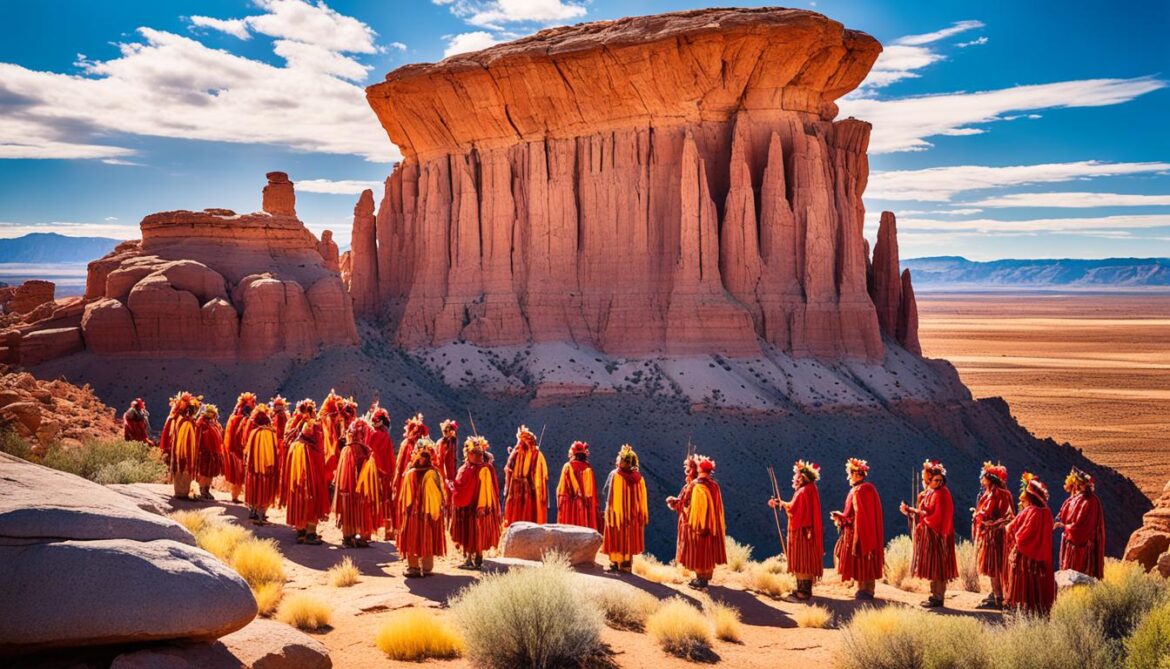
Integrating Sacred Sites into Conservation Networks
Integrating sacred natural sites into national and international protected area networks is crucial for the long-term conservation of biodiversity in Australia. These sacred sites, with their rich cultural and ecological significance, need to be recognized and included in conservation strategies.
However, it is important to acknowledge the unique characteristics of these sites and develop specialized management approaches that take into account their sacred and spiritual value. Sustainable management of sacred sites requires a balance between conservation goals and the preservation of traditional practices and beliefs.
The involvement of local communities, who hold traditional ecological knowledge, is vital in the sustainable management of these sites. Their intimate understanding of the land and its biodiversity can inform conservation efforts and help ensure the protection of natural environments.
By fostering collaboration and partnerships between conservation organizations, government agencies, and Indigenous communities, we can establish effective frameworks for the management and protection of sacred natural sites. This will not only safeguard the cultural heritage of these sites, but also contribute to the conservation of Australia’s unique biodiversity.
Through the integration of sacred sites into conservation networks, we can work towards a future where the conservation of biodiversity and the preservation of cultural heritage go hand in hand, creating a more sustainable and harmonious relationship between humans and the environment.
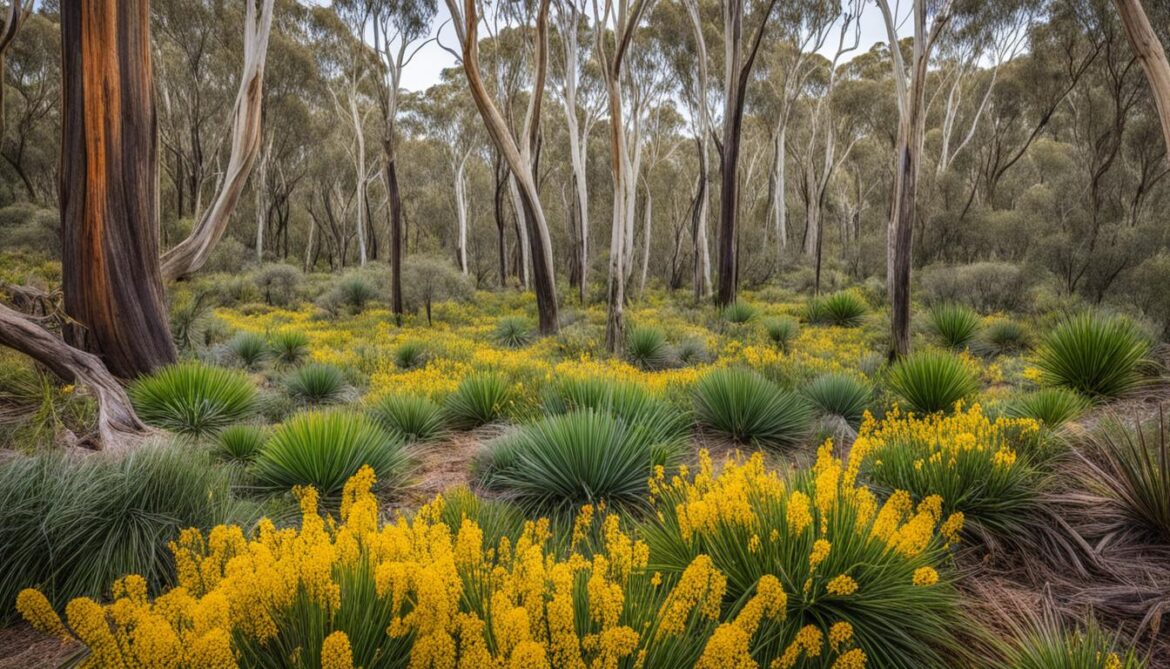
| Benefits of Integrating Sacred Sites into Conservation Networks | Challenges in Integrating Sacred Sites into Conservation Networks |
|---|---|
|
|
The Role of Sacred Sites in Australia
In Australia, sacred sites play a significant role in the conservation of biodiversity. The native Aboriginal population recognizes and protects sacred groves, rainforests, and woodlands that are essential for the survival of various species. These Indigenous sacred places in Australia are not only of cultural significance but also serve as important habitats for wildlife, contributing to the overall conservation of biodiversity in Australia.
“Sacred sites are not just important to Aboriginal people, they are also home to many unique and endangered species. They provide sanctuaries and safe havens, preserving ancient ecosystems and fostering the growth and survival of diverse flora and fauna.” – Dr. Emma Johnston, Marine Scientist
The conservation of biodiversity in Australia is closely linked to the preservation of Aboriginal cultural landscapes. Traditional ecological knowledge in Australia, passed down through generations, is deeply connected to the understanding and protection of sacred sites. This knowledge encompasses a holistic approach to land stewardship and respects the intricate balance between humans, animals, and the environment.
Despite their significance, the conservation of sacred sites faces challenges due to the clash between economic development and the preservation of these culturally important areas. The ongoing industrial activities and urbanization pose threats to the integrity of these sites, requiring a delicate balance between development and conservation efforts.
To address these challenges, collaborative efforts are underway to ensure the protection of sacred sites while promoting sustainable development. These initiatives involve engaging with Indigenous communities, who hold invaluable traditional ecological knowledge, in decision-making processes regarding land use and management.
The Importance of Aboriginal Cultural Landscapes
Aboriginal cultural landscapes are not only repositories of cultural and spiritual heritage but also provide critical habitats for a diverse range of species. The interconnectedness of cultural and ecological values in these landscapes highlights the need for their preservation and sustainable management.
Australia’s unique flora and fauna have evolved in harmony with Indigenous land management practices for thousands of years. Traditional burning practices, water management systems, and careful harvesting of resources have shaped the landscape and maintained biodiversity. By preserving sacred sites and the associated traditional ecological knowledge, Australia can continue to benefit from the wisdom of its First Nations peoples and ensure the preservation of its natural heritage.
Conserving Biodiversity Through Collaboration
The conservation of biodiversity in Australia relies on collaboration between various stakeholders, including government agencies, Indigenous communities, conservation organizations, and researchers. By recognizing the importance of sacred sites and integrating them into conservation strategies, we can ensure the long-term protection of Australia’s natural heritage.
Through partnerships that respect Indigenous rights and involve local communities, we can leverage traditional ecological knowledge and create holistic approaches to land and wildlife management. This collaborative effort not only helps safeguard sacred sites but also fosters sustainable environmental practices that benefit both the natural environment and local communities.
Image:
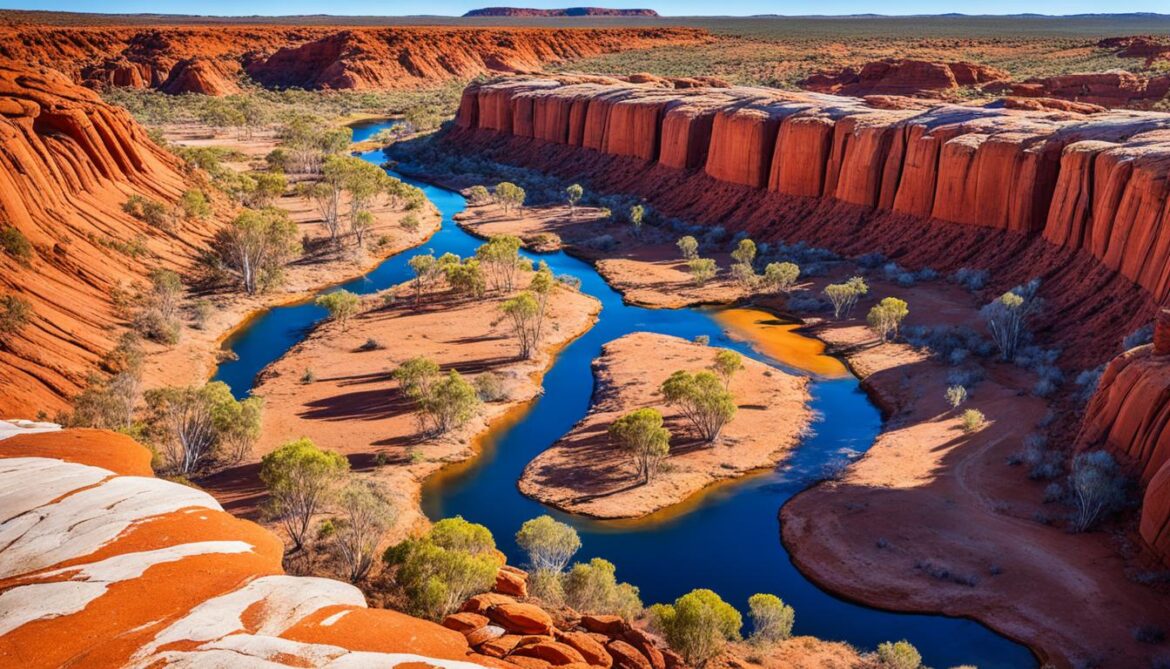
Indigenous Protected Areas and Sacred Sites
Indigenous Protected Areas (IPAs) in Australia make significant contributions to the conservation of biodiversity and the protection of sacred sites. These areas are managed by Indigenous rangers and custodians who combine traditional ecological knowledge with contemporary conservation approaches.
Through the integration of sacred sites management into IPAs, cultural heritage is preserved while sustainable environmental practices are upheld. This ensures the long-term protection and conservation of Australian natural heritage sites, including indigenous sacred places in Australia.
“The combination of traditional knowledge and modern conservation techniques in Indigenous Protected Areas creates a unique and effective model for preserving both the natural environment and the cultural significance of sacred sites.” – Indigenous Ranger
IPAs play a crucial role in the overall conservation of biodiversity in Australia. By incorporating the protection of natural environments, including sacred sites, into these designated areas, a holistic approach is taken to preserve the ecological integrity of the landscape.
Through collaborative efforts and shared governance between Indigenous groups, local communities, and government agencies, Indigenous Protected Areas serve as a platform for sustainable land management practices and the safeguarding of precious cultural heritage for future generations.
The Cultural and Environmental Significance
The cultural and environmental significance of Indigenous Protected Areas cannot be overstated. These areas not only preserve sacred sites, which hold immense spiritual and cultural value to indigenous communities, but also contribute to the overall conservation of biodiversity in Australia.
The protection of natural environments within IPAs ensures that wildlife diversity in Australian ecosystems thrives, benefiting both the natural heritage and future generations. Indigenous peoples’ deep connection to the land fosters a profound understanding of the ecological intricacies and leads to sustainable management practices that have stood the test of time.
By recognizing and respecting the importance of Indigenous Protected Areas and sacred sites, Australia embraces a holistic approach to conservation that respects both the cultural and environmental dimensions of the natural world.

Conservation Partnerships in Action
The effective management of Indigenous Protected Areas and sacred sites requires collaboration and partnerships between government agencies, industry stakeholders, and indigenous communities. When all parties come together, true conservation efforts are possible.
These partnerships allow for the sharing of knowledge, resources, and expertise, resulting in more effective management strategies and greater positive impact on the conservation of biodiversity. By aligning with one another, stakeholders can address challenges, such as the protection of Australian natural heritage sites, and find sustainable solutions that benefit both the environment and the cultural heritage of the First Nations peoples.
| Partnerships in Action: | Key Benefits: |
|---|---|
| Collaboration between Indigenous rangers and government agencies | Shared knowledge, cultural preservation, effective land management |
| Industry participation in conservation efforts | Sustainable practices, corporate responsibility, support for indigenous communities |
| Engagement with local communities | Community empowerment, social cohesion, inclusive decision-making |
By fostering conservation partnerships, Australia takes significant strides towards protecting its natural environments, conserving biodiversity, and embracing the cultural heritage of the indigenous peoples.
Management Challenges and Threats
Sacred natural sites in Australia face a range of management challenges and threats that put their conservation and protection at risk. These challenges include illegal access, damage, and desecration of these sites. Additionally, conflicts with development activities such as mining and tourism pose significant threats to the integrity of these natural environments. Limited law enforcement and patrol capacity further hinder the effective protection and monitoring of these sacred sites, leaving them vulnerable to exploitation and degradation.
It is crucial to address these management challenges and threats in order to ensure the preservation of Australia’s natural heritage sites. This requires a collaborative approach that involves education, guidelines, and dialogue with industries operating in close proximity to these sites. By raising awareness about the importance of these sacred natural sites and the need for their protection, we can work towards establishing sustainable practices that prioritize the conservation of biodiversity and the preservation of Australia’s unique ecosystems.
“Effective protection and management of sacred natural sites is essential for the long-term conservation of Australia’s wildlife diversity and the protection of its natural environments.”
To illustrate the significance of management challenges and threats faced by sacred natural sites, consider the following:
| Management Challenges | Threats |
|---|---|
| Illegal access | Unregulated activities |
| Damage and desecration | Exploitation |
| Conflicts with development activities | Degradation |
| Limited law enforcement | Exploitation |
Addressing these challenges requires a proactive approach that involves collaboration between Indigenous custodians, government bodies, conservation organizations, and local communities. Through education and communication, we can foster a deeper understanding of the cultural and environmental significance of these sites, promoting responsible stewardship and sustainable management practices.
By recognizing and addressing the management challenges and threats faced by sacred natural sites, we can contribute to the conservation of Australia’s biodiversity and the protection of its natural environments.
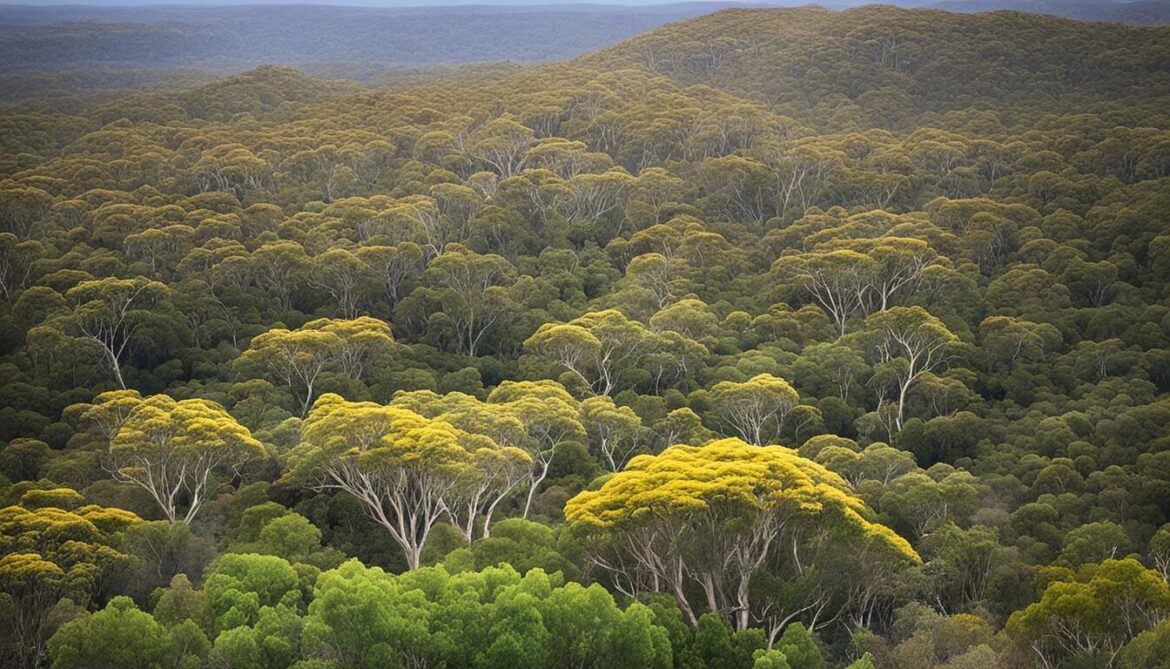
Pilbara: A Case Study in Conservation Partnerships
The Pilbara region in Western Australia exemplifies successful conservation partnerships between the government, industry, Traditional Owners, and landholders. This collaboration has led to the development of the Pilbara Cultural Land Management Project, which empowers Indigenous groups to take the lead in caring for their land and preserving their cultural heritage. Through shared governance and the cultivation of technical capabilities, the project strives to support sustainable environmental and cultural land management practices.
The Power of Collaboration
Conservation partnerships in Australia are essential for the protection of sacred natural sites and the biodiversity they harbor. In the Pilbara region, these partnerships involve multiple stakeholders who recognize the importance of Aboriginal cultural landscapes and the preservation of natural environments. By working together, government agencies, industry representatives, Traditional Owners, and landholders can pool their resources, knowledge, and expertise to ensure the long-term conservation of this ecologically and culturally significant region.
The Pilbara Cultural Land Management Project provides a platform for Traditional Owners to actively participate in decision-making processes and contribute their traditional ecological knowledge. This inclusion fosters a collaborative approach to conservation that respects and integrates Aboriginal custodianship of the land.
Sustainable Land Management
One of the key objectives of the Pilbara Cultural Land Management Project is to support sustainable land management practices. Through the project, local communities and Indigenous rangers acquire the technical capabilities necessary to effectively manage and protect the land while preserving their cultural heritage. By combining contemporary conservation approaches with traditional ecological knowledge, these partnerships strive to strike a balance between conservation and land use.
Protecting Australia’s Natural Heritage
The Pilbara region is home to a diverse range of plant and animal species, many of which are endemic to the area. Through conservation partnerships in Australia, such as the one in the Pilbara, efforts are made to safeguard this unique biodiversity. By prioritizing the protection of natural environments and acknowledging the significance of Aboriginal cultural landscapes, these partnerships contribute to the preservation of Australia’s natural heritage for future generations.
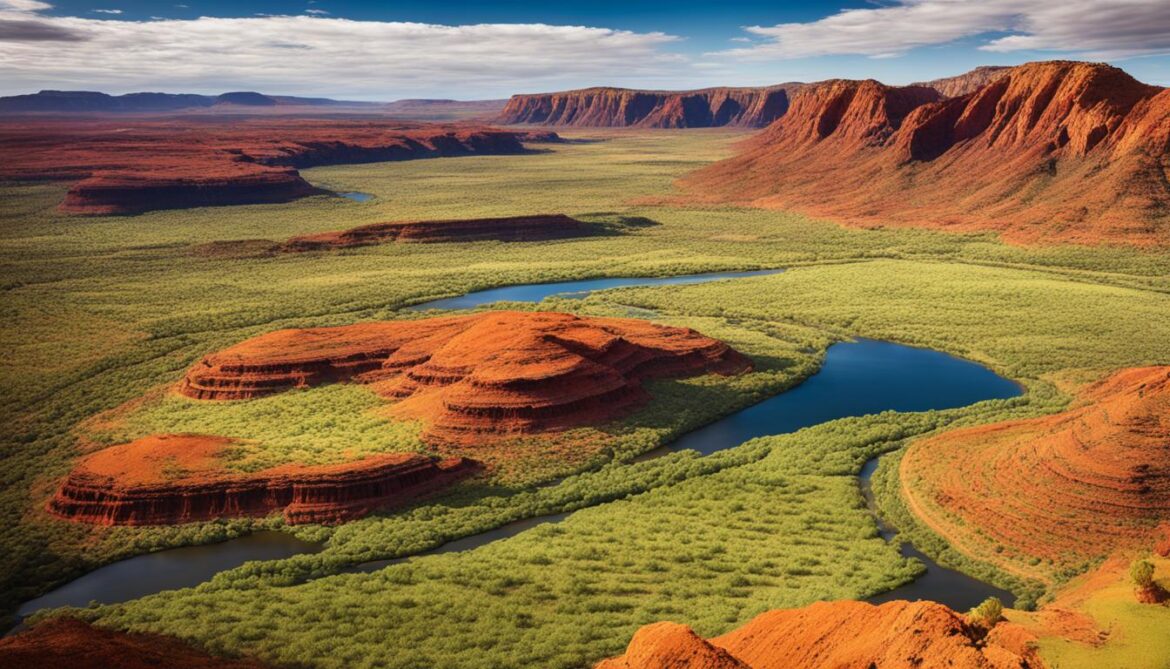
Conclusion
Protecting sacred natural sites is crucial for the conservation of biodiversity and the preservation of cultural heritage in Australia. These sites, such as Aboriginal cultural landscapes and Indigenous sacred places, play a significant role in maintaining the country’s unique wildlife diversity and natural environments.
Conservation partnerships that involve government, industry, Indigenous groups, and local communities are vital for the sustainable management of these sites. By recognizing the significance of sacred sites and integrating them into conservation networks, we can ensure the long-term protection of Australia’s natural heritage.
Through collaborative efforts, we can address the management challenges and threats faced by these sites, such as illegal access, damage, desecration, and conflicts with development activities. Education, guidelines, and dialogue with industries are necessary to foster understanding and cooperation in the preservation of sacred sites.
In conclusion, the conservation of Australia’s sacred natural sites should be a priority. By valuing their importance, engaging in conservation partnerships, and implementing sustainable management practices, we can safeguard these sites for future generations and contribute to the overall conservation of biodiversity in Australia.




